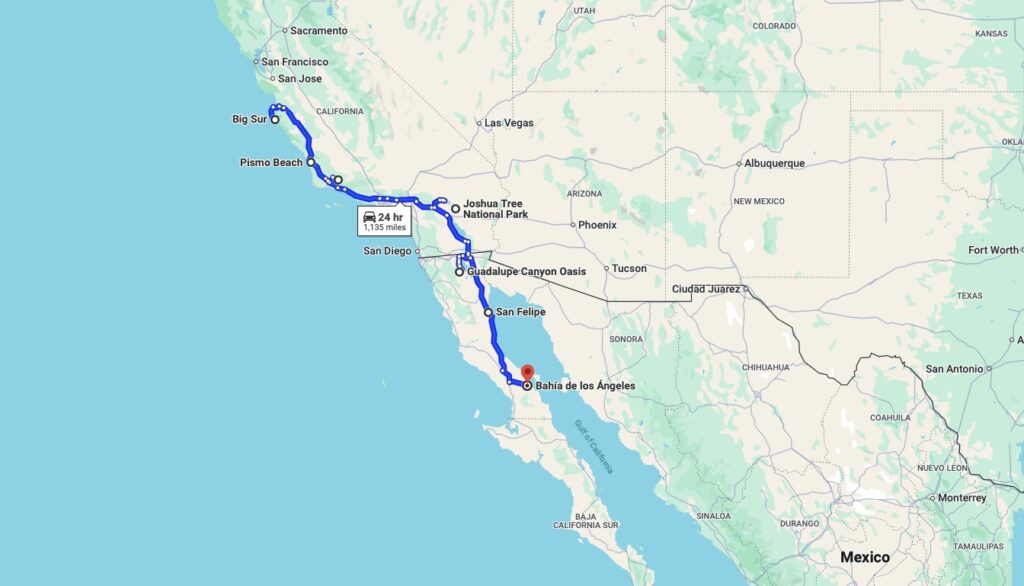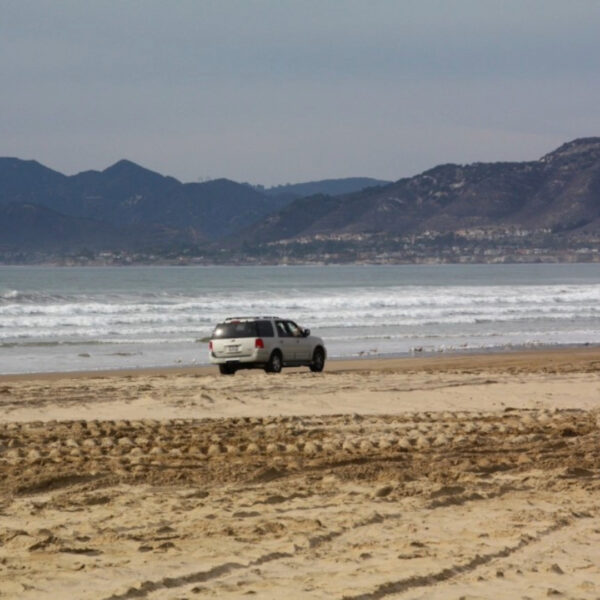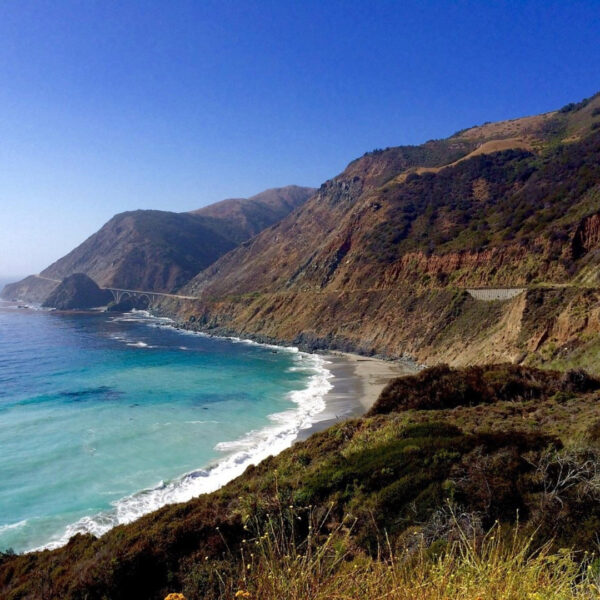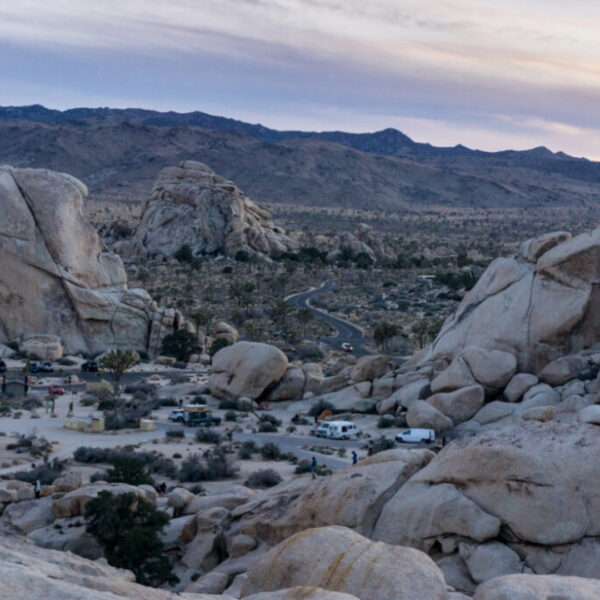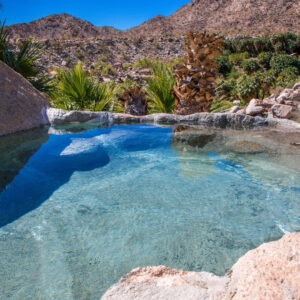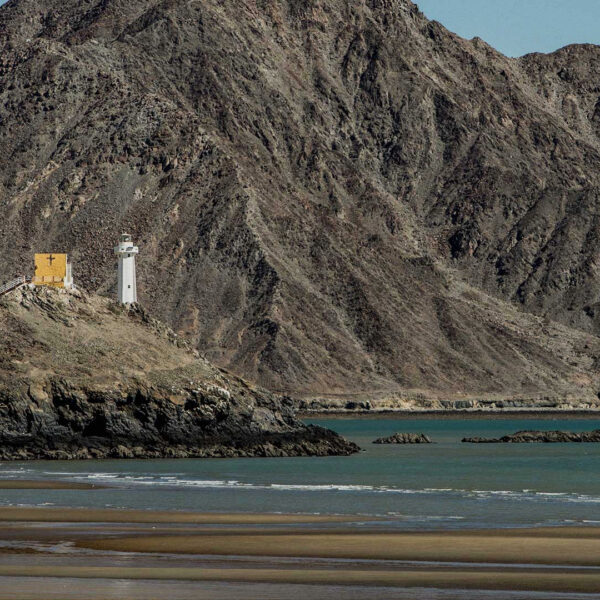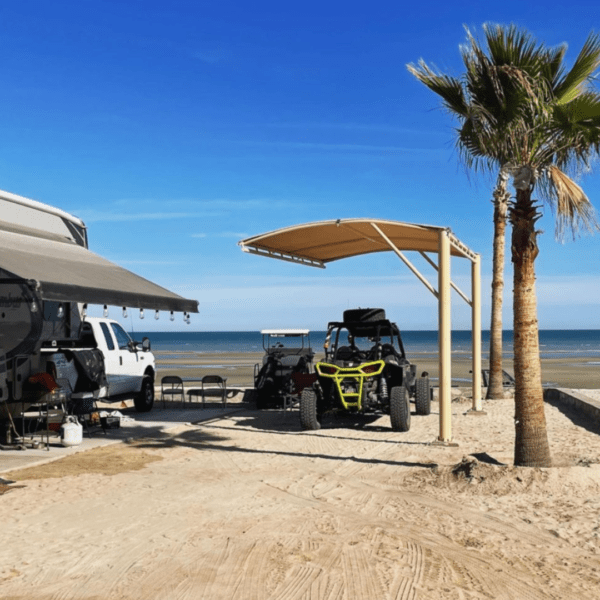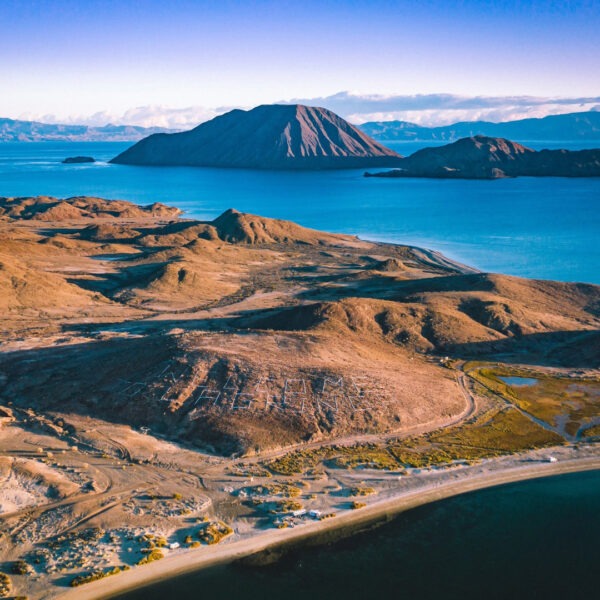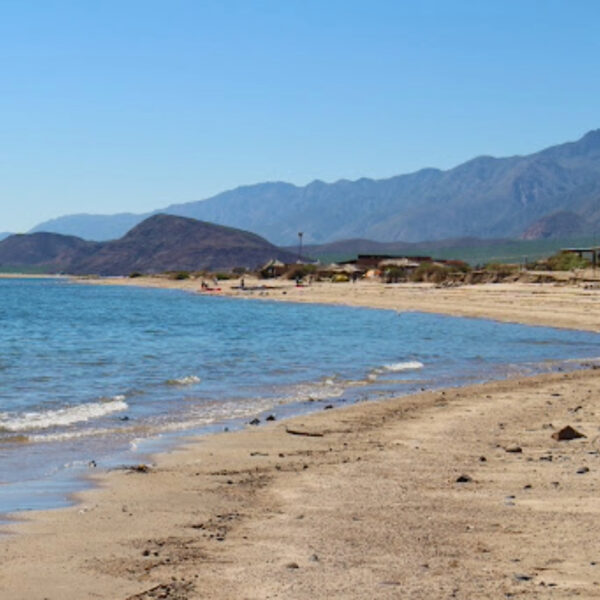We’ve covered some incredible ground so far on this overlanding journey. In the first article, we ventured from Vancouver Island through stops like Cypress Provincial Park, White Rock, and Deception Pass State Park, getting a taste of the Pacific Northwest’s natural beauty. The second article took us further south, exploring Olympic National Park, the Oregon Coast at Cannon Beach, Crater Lake, and the Redwood Forests, and finally landing in Big Sur.
For your journey from Big Sur to Baja California, we’ve selected six key stops perfect for overlanders and campers: Pismo Beach, Los Padres National Forest, Joshua Tree National Park, Guadalupe Canyon Oasis, San Felipe, and Bahía de Los Ángeles. Each location offers its own unique blend of scenic beauty and camping opportunities, guiding you through both the Pacific Coast and Baja’s breathtaking landscapes. Let’s dive into the details of each stop to help you plan the final leg of your adventure.
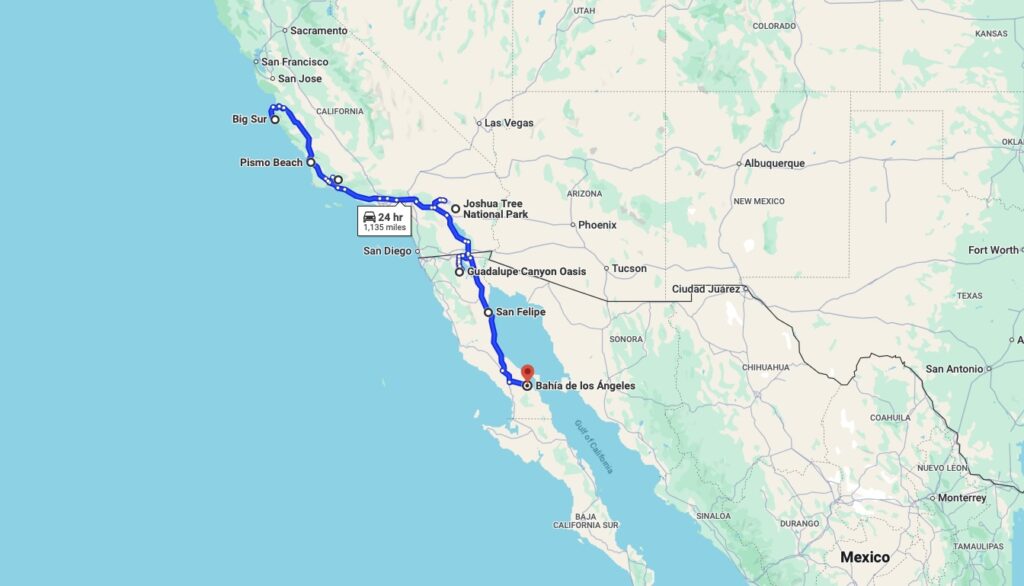
Let’s pick up where we left off at Big Sur and head south to our first stop on this final leg of the journey: Pismo Beach, California. The drive from Big Sur to Pismo Beach is about 2.5 hours along the iconic Highway 1. This stretch offers some of the most stunning coastal views you’ll find in California. Along the way, you’ll pass through San Luis Obispo, a charming town where you can grab a bite, refuel, or explore its historic downtown. This route is fairly easy, and the scenic drive is sure to make the time fly by. As you approach Pismo Beach, you’ll feel the shift to a laid-back, beachy vibe.
1. Pismo Beach, California
Why stop here?
Pismo Beach is a favorite for both adventurers and those looking to relax by the ocean. Known for its wide sandy shores, this destination is famous for beach camping, off-road driving, and breathtaking sunsets over the Pacific. The Oceano Dunes State Vehicular Recreation Area (SVRA) is a must-see for overlanders, as it’s one of the few places in California where you can legally drive and camp right on the beach. Whether you’re into surfing, dune buggies, or simply enjoying the serenity of the ocean, Pismo Beach has something for everyone. Missing Pismo Beach would mean skipping one of California’s premier coastal destinations.
Fastest Route (Big Sur to Pismo Beach):
From Big Sur, head south on Highway 1 for around 2.5 hours. The road hugs the coastline, offering amazing views of cliffs, the ocean, and wildlife. If you need to stop along the way, San Luis Obispo is a great option for food, gas, or a quick exploration of its famous Mission or quirky Bubblegum Alley.
Camping Options at Pismo Beach:
Oceano Dunes SVRA:
- This is the go-to spot for overlanders, as you can drive your vehicle directly onto the beach and camp with the ocean just steps away. This unique experience is rare in California, making it a popular destination for both locals and travellers.
- Fees: 10 to 30 CAD per night, depending on the season and your setup.
- Facilities: Basic, with portable toilets available, but you’ll need to bring your own water and supplies. There are no hookups for RVs, so it’s ideal for off-grid camping.
Pismo Coast Village RV Resort:
- For those who prefer more amenities, Pismo Coast Village offers full hookups, Wi-Fi, showers, laundry, and a convenience store. It’s located right by the beach, making it easy to access both the water and the town.
- Fees: Around 60 CAD per night for a full hookup site.
- Facilities: Full hookups, hot showers, laundry, playgrounds, and nearby restaurants.
North Beach Campground:
- A more traditional campsite, this state park campground is just a short walk from the beach and offers space for tents, campers, and RVs.
- Fees: 30 to 50 CAD per night, depending on the site and season.
- Facilities: Bathrooms, water, and showers are available, but no hookups for RVs.
Overlanding and Safe Parking for Roof Tents:
At Oceano Dunes SVRA, overlanders can park directly on the beach, with plenty of space to set up roof tents. The open expanse of sand allows for a unique camping experience, and you’ll be surrounded by other overlanders, making it a safe and enjoyable spot. Just be mindful of the tides and park your vehicle far enough from the water to avoid any issues.
For those looking for a more structured environment, North Beach Campground or Pismo Coast Village RV Resort offers safer, more sheltered areas with facilities, making them better options in case of poor weather conditions.
Next, we’re heading inland to explore the beautiful Los Padres National Forest, a great spot for overlanding, hiking, and dispersed camping!
2. Los Padres National Forest, California
Why stop here?
Los Padres National Forest is a hidden gem for overlanders who love solitude and natural beauty. With thousands of acres of wilderness, it’s a prime spot for dispersed camping, hiking, and off-road adventures. The forest offers a variety of landscapes, from thick oak woodlands to chaparral-covered hillsides and even snowy peaks in the higher elevations. It’s an ideal stop if you want to get off the grid, enjoy some peace and quiet, and experience the beauty of California’s backcountry.
The forest is also home to several natural hot springs, including the Big Caliente Hot Springs, which can be a perfect spot to unwind after a day of exploring. Los Padres is perfect for those who enjoy rugged terrain, scenic drives, and the chance to camp away from the crowds.
Fastest Route (Pismo Beach to Los Padres National Forest):
From Pismo Beach, take US-101 South for about an hour, then head inland via CA-166 toward Los Padres National Forest. The drive takes you through the countryside and into the mountains, with breathtaking views along the way.
Camping Options at Los Padres National Forest:
Dispersed Camping:
- One of the best features of Los Padres National Forest is the freedom to camp almost anywhere outside designated campsites. This dispersed camping option is great for overlanders, allowing you to find your secluded spot surrounded by nature.
- Fees: Free! Dispersed camping is allowed without fees, but you’ll need to follow the Leave No Trace principles and bring your own water and supplies.
- Facilities: None, so come prepared with everything you’ll need.
- If you’re looking for a developed campsite with facilities, Kirk Creek offers stunning ocean views while being just a short drive away from the forest’s main trails.
- Fees: Around CAD 35 per night.
- Facilities: Bathrooms, picnic tables, and fire pits, but no hookups for RVs.
- Located in the Santa Ynez Mountains, this campground is a bit more remote but offers beautiful mountain views and access to nearby hiking trails.
- Fees: Around CAD 25 per night.
- Facilities: Vault toilets, picnic tables, and fire pits.
Overlanding and Safe Parking for Roof Tents:
Los Padres National Forest is an overlanding paradise, with plenty of roads and trails to explore. You can safely park your vehicle and set up a roof tent just about anywhere that dispersed camping is allowed. Some of the best spots are along East Camino Cielo or Big Pine Road, where you’ll be treated to stunning views of the valley and surrounding peaks.
If you prefer more developed campgrounds, Kirk Creek or Figueroa are excellent choices, offering safe parking spots and the convenience of basic amenities. Keep in mind that November can bring cooler temperatures, especially at higher elevations, so come prepared with warm gear and check road conditions in case of snow.
Next, we’ll head to one of California’s most iconic desert landscapes: Joshua Tree National Park. Prepare for a dramatic change in scenery as we leave the forest behind!
3. Joshua Tree National Park, California
Why stop here?
Joshua Tree National Park is one of the most unique landscapes in the United States, known for its surreal rock formations and the iconic Joshua Trees that give the park its name. Overlanders, campers, and adventurers flock here for its clear night skies, epic rock climbing, and endless opportunities for off-road exploration. This park is a must for anyone traveling through California, especially in November, when the weather is cooler and the crowds are thinner.
The park features vast desert landscapes, with trails that take you through groves of Joshua trees, hidden oases, and scenic viewpoints like Keys View, where you can see all the way to Mexico on a clear day. If you’re into stargazing, Joshua Tree is renowned for its dark skies, perfect for spotting constellations and meteor showers.
Fastest Route (Los Padres National Forest to Joshua Tree National Park):
From Los Padres National Forest, take CA-33 South to I-5 South, then follow CA-58 East through Bakersfield. Continue onto I-10 East, which will take you straight to Joshua Tree. The drive is a mix of mountain roads, highways, and desert scenery.
Approximate time: 4.5 to 5 hours.
Camping Options at Joshua Tree National Park:
- This is one of the most popular campgrounds in the park, especially among rock climbers and overlanders. It’s located near some of the park’s most famous rock formations and hiking trails.
- Fees: Around $20 USD (approx. $27 CAD) per night.
- Facilities: Vault toilets, picnic tables, fire pits, but no water, so be sure to bring your own.
- Jumbo Rocks is known for its otherworldly rock formations and its proximity to some of the best stargazing spots in the park. It’s a great spot to set up your roof tent and enjoy the desert night sky.
- Fees: Around $20 USD (approx. $27 CAD) per night.
- Facilities: Vault toilets, fire pits, and picnic tables, but again, no water available on-site.
Overlanding and Safe Parking for Roof Tents:
Joshua Tree National Park has several campgrounds that are perfect for overlanders. You can park your vehicle and set up your roof tent at any of the designated campgrounds, but Hidden Valley and Jumbo Rocks are the best for overlanders due to their location and ease of access. The park also has several dirt roads where you can explore further into the desert, including Geology Tour Road and Berdoo Canyon Road. These routes are great for those with high-clearance vehicles or 4x4s.
However, overlanding and dispersed camping are not allowed outside of designated areas in the park, so make sure to stick to the campgrounds for overnight stays. The desert environment can be extreme, especially at night, so it’s important to set up in a safe, controlled area.
With Joshua Tree behind us, we’ll now head south into Mexico, toward Guadalupe Canyon Oasis, an unforgettable destination known for its stunning canyon views and private hot springs.
4. Guadalupe Canyon Oasis (Baja California, Mexico)
Why stop here?
Guadalupe Canyon Oasis is an absolute must for overlanders and campers who want to experience the serenity of Baja’s desert landscapes while relaxing in private hot springs. Nestled deep in the canyon, this oasis is a unique camping destination, offering a combination of natural beauty and comfort. With towering canyon walls, stunning desert views, and natural pools of hot water, this spot is a perfect escape from the hustle of the road. It’s ideal for travellers who enjoy peaceful, off-the-grid experiences surrounded by raw nature.
Each campsite comes with its own hot spring pool, which makes it a perfect place to unwind after long days of travel. The combination of desert nights and warm pools creates a tranquil atmosphere you won’t find in many places. Skipping Guadalupe Canyon Oasis would mean missing one of the most unique and rejuvenating stops in all of Baja California.
Fastest Route (Joshua Tree National Park to Guadalupe Canyon Oasis):
From Joshua Tree, take I-10 East to the U.S.-Mexico border, crossing at Calexico/Mexicali. After crossing the border, follow Mexican Federal Highway 2D east towards La Rumorosa. You’ll take a dirt road turn-off toward Guadalupe Canyon, which is about 2 hours from the border. It’s a remote location, so be sure to have enough supplies and fuel.
Approximate time: 5 to 6 hours (including border crossing time).
Border Crossing:
At the Calexico/Mexicali crossing, Canadian and U.S. citizens can use their passports for entry into Mexico. Expect possible wait times at the border, and be prepared to declare any gear, food, or items you’re bringing across. Guadalupe Canyon is in a safe and less populated part of Baja, but it’s always good to check travel advisories before crossing.
Camping Options at Guadalupe Canyon Oasis:
Campsites with Hot Springs:
- Every campsite at Guadalupe Canyon Oasis comes with access to a private hot spring pool, perfect for relaxing in the middle of the desert.
- Fees: Ranges from $40 to $125 (approx. $55 to CAD 170), depending on the size of the campsite and the features you choose (such as proximity to the canyon walls or larger hot springs).
Rustic Cabins:
- For those who prefer a bit more comfort, some campsites offer rustic cabins with beds and outdoor kitchens. This is a great option if you’re traveling light but still want the hot spring experience.
- Fees: Starting around $80 (approx. CAD 110) per night.
Overlanding and Safe Parking for Roof Tents:
Guadalupe Canyon is well-known for its overlander-friendly setup. You can park your 4×4 vehicle directly at your campsite and set up a roof tent with plenty of space. The area is safe for overlanders, and the canyon’s seclusion provides a sense of peace and privacy. The campsites are well-maintained, and the hot springs add a level of luxury to your stay. Keep in mind that the road to the canyon is a dirt road, so a high-clearance vehicle is recommended.
Overlanding Activities:
While the main draw is the hot springs, Guadalupe Canyon also offers hiking trails through the canyon, wildlife viewing, and plenty of space for relaxation. If you’re into photography, the dramatic canyon walls and desert flora provide great opportunities for stunning shots, especially at sunrise and sunset. This is a perfect place to recharge before continuing your overlanding adventure.
Our next stop will take us further south along Baja’s coastline to the lively and scenic town of San Felipe, where desert meets the Sea of Cortez.
5. San Felipe (Baja California, Mexico)
Why stop here?
San Felipe is a classic overlanding destination that offers a mix of desert landscapes and beautiful coastline along the Sea of Cortez. Known for its calm, warm waters and stunning beaches, San Felipe is the perfect stop for those who love both camping and ocean activities. You can relax on sandy beaches, swim in the clear waters, or take a short drive into the desert for more rugged adventures. The town itself is welcoming, with a laid-back vibe, great food (especially seafood), and plenty of spots to stock up on supplies.
San Felipe is an excellent place for overlanders who want a balance of beach relaxation and outdoor activities. Whether you’re interested in fishing, off-roading on the dunes, or just enjoying a peaceful sunset by the sea, this destination has something for everyone. Skipping San Felipe means missing out on the unique mix of desert and sea that defines much of Baja California.
Fastest Route (Guadalupe Canyon Oasis to San Felipe):
After leaving Guadalupe Canyon, head back towards Mexican Federal Highway 2 and continue to Mexicali. From there, follow Mexican Federal Highway 5 south along the eastern coastline of Baja California towards San Felipe. This drive takes you through arid landscapes, but once you get closer to San Felipe, you’ll be greeted by the sparkling blue waters of the Sea of Cortez.
Approximate time: 3 to 4 hours.
Camping Options in San Felipe:
Kiki’s RV Camping Hotel:
- This campground is located right on the beach, offering full hookups, showers, and shaded camping spots. It’s a great spot for overlanders with rooftop tents or campers, providing easy access to the beach.
- Fees: Around $20 to $30 per night (approx. CAD 27 to CAD 40), depending on the campsite and services.
Pete’s Camp:
- A well-known spot among overlanders, Pete’s Camp offers beachfront camping with basic facilities like restrooms and showers. It’s a popular gathering place for both locals and travelers, and it’s close to town for easy access to restaurants and supplies.
- Fees: $15 to $25 per night (approx. CAD 20 to CAD 33).
Overlanding and Safe Parking for Roof Tents:
San Felipe is a prime spot for overlanders, with plenty of space to set up a roof tent either on the beach or in more developed campgrounds. The area is safe for overland travellers, with many fellow overlanders and RVers frequently visiting. The roads leading to the campgrounds are well-maintained, and both campgrounds offer easy access for vehicles.
Overlanding Activities:
San Felipe is a great base for exploring the surrounding desert or enjoying ocean activities. You can head out for a day of off-roading in the San Felipe Desert or drive to Valley of the Giants, where you’ll find towering cacti that are hundreds of years old. On the water, kayaking, paddleboarding, and fishing are popular activities. The sunsets over the Sea of Cortez are absolutely breathtaking and should not be missed.
Our next and final stop on this leg of the journey takes us to the tranquil Bahía de Los Ángeles, where overlanders can enjoy a more remote and peaceful coastal experience.
6. Bahía de Los Ángeles (Baja California, Mexico)
Why stop here?
Bahía de Los Ángeles is a hidden gem along the eastern coast of Baja California, known for its remote beaches, crystal-clear waters, and incredible marine life. The area is far less crowded than other Baja destinations, offering a peaceful retreat for overlanders and campers looking to connect with nature. The bay is home to dolphins, sea turtles, and even whale sharks, making it an unforgettable stop for wildlife lovers. If you’re into kayaking, snorkelling, or simply enjoying the tranquillity of a quiet beach, Bahía de Los Ángeles is the perfect destination.
Missing this stop would mean passing up on one of the most serene and untouched coastal spots in all of Baja. It’s perfect for those who want to relax, explore secluded beaches, or enjoy stargazing away from city lights.
Fastest Route (San Felipe to Bahía de Los Ángeles):
From San Felipe, continue south on Mexican Federal Highway 5 and connect to Mexican Federal Highway 1 at Chapala. Head south through Guerrero Negro and then turn east onto Mexican Federal Highway 12 to reach Bahía de Los Ángeles. This drive offers beautiful desert landscapes and stunning coastal views as you approach the bay.
Approximate time: 6 to 7 hours.
Camping Options in Bahía de Los Ángeles:
Daggett’s Beach Camping:
- A small, peaceful campground located right on the bay, offering basic facilities like showers, restrooms, and spaces to park your vehicle and set up your roof tent. You’ll have direct access to the beach, making it an ideal spot to relax and enjoy the ocean.
- Fees: Around $10 to $20 USD per night (approx. $13 to $27 CAD).
Campo Archelon:
- Another well-known overlanding spot, offering eco-friendly accommodations and campsites right on the beach. This campground is perfect for those who prefer a more rustic, off-the-grid experience while still having access to basic amenities.
- Fees: $15 to $25 USD per night (approx. $20 to $33 CAD).
Overlanding and Safe Parking for Roof Tents:
Bahía de Los Ángeles is a favourite among overlanders looking for a quiet, remote experience. The area is safe for travellers, and there are plenty of beachside spots where you can park your vehicle and set up your roof tent. The roads leading to Bahía de Los Ángeles are generally well-maintained, and once you arrive, you’ll find ample space to set up camp and enjoy the stunning surroundings.
Overlanding Activities:
Bahía de Los Ángeles offers plenty for overlanders to do, from exploring the desert landscapes around the bay to enjoying the calm waters of the Sea of Cortez. You can rent kayaks or join a local boat tour to explore nearby islands and see marine wildlife up close. For those interested in snorkelling or diving, the waters around the bay are rich with sea life, and there’s even a chance to spot whale sharks if you visit during the right season.
With this final stop, we conclude our three-part journey from Vancouver Island to Baja California. This road trip has taken you through stunning coastal routes, national parks, deserts, and quiet beaches, providing an unforgettable overlanding adventure from the Pacific Northwest to the heart of Baja. Along the way, we’ve highlighted the best camping spots, safe areas for overlanders, and must-see sights that make each stop unique.
This entire trip can take anywhere from 3 to 5 weeks, depending on how long you spend at each stop and how many detours you take. The ideal time to begin this journey is in late October or early November, escaping the colder weather in the north and arriving in Baja before winter truly sets in. For the return trip, the best season to head back north would be March or April, when the warmer weather starts to return to the Pacific Northwest, and the snow has melted, opening up more overlanding routes and camping options.
Whether you’re an experienced overlander or a first-time camper, this road trip offers something for everyone. From rugged mountains to serene beaches, this is the ultimate overlanding adventure that will leave you with memories to last a lifetime. Stay tuned for more overlanding guides and trip ideas to help you explore the most beautiful places the world has to offer!

